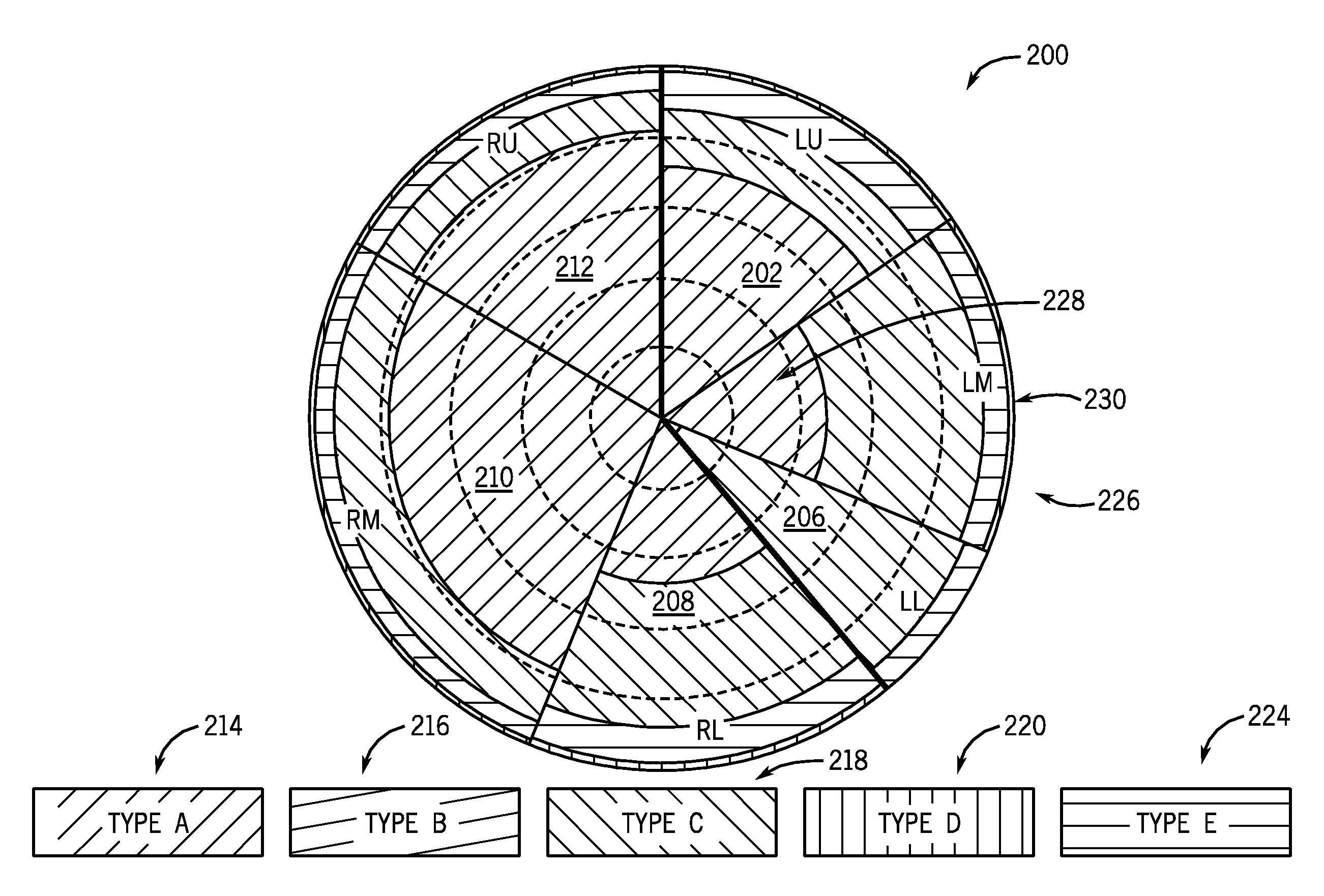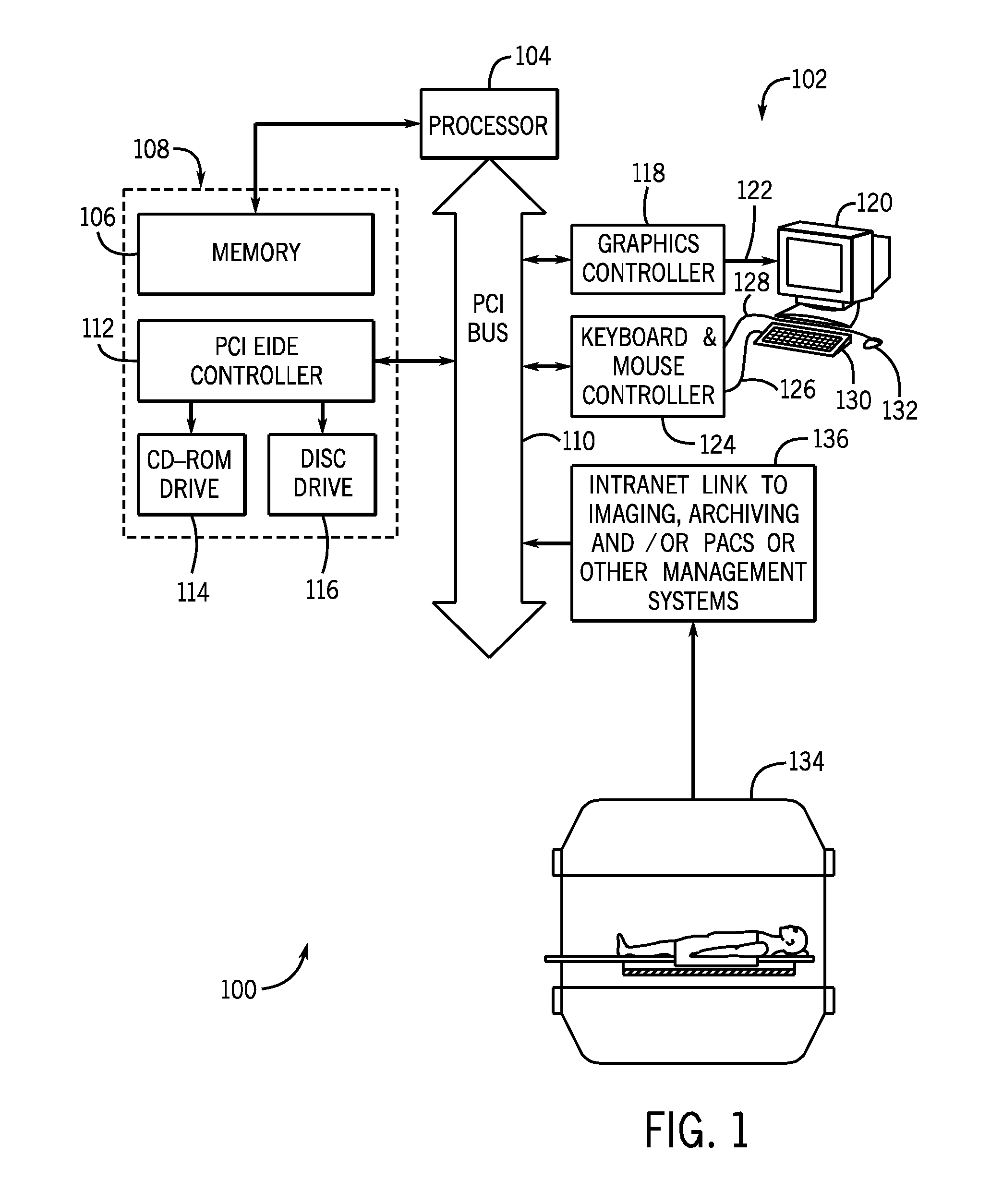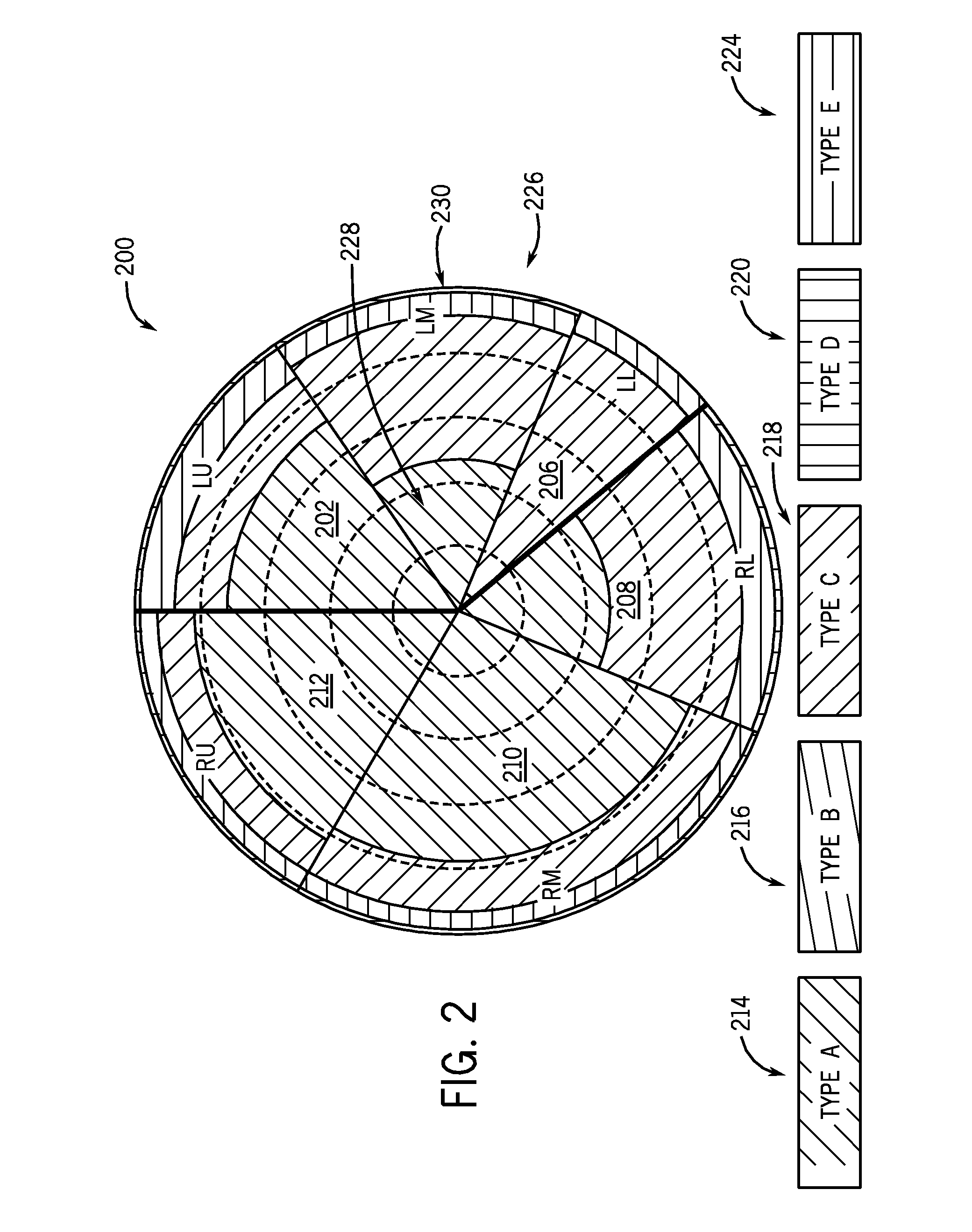Systems and methods for analyzing in vivo tissue volumes using medical imaging data
a tissue volume and imaging data technology, applied in the field of systems and methods for analyzing in vivo tissue volume using medical imaging data, can solve the problems of inability to meet the wide and variable clinical challenges of the current system or method, inability to optimally assess the disease through multi-site use, prohibitively expensive multi-disciplinary subspecialty assessment, etc., to facilitate clinical determination and/or pathological evaluation.
- Summary
- Abstract
- Description
- Claims
- Application Information
AI Technical Summary
Benefits of technology
Problems solved by technology
Method used
Image
Examples
Embodiment Construction
[0029]Referring now to FIG. 1, an analysis and imaging system 100 for conducting analysis in accordance with the present invention is illustrated. The system includes computer workstation 102 includes a processor 104 that executes program instructions stored in a memory 106 that forms part of a storage system 108. The processor 104 is a commercially available device designed to operate with available operating systems. It includes internal memory and I / O control to facilitate system integration and integral memory management circuitry for handling all external memory 106. The processor 104 also has access to a PCI bus driver that facilitates interfacing with a PCI bus 110.
[0030]The PCI bus 110 is an industry standard bus that transfers data between the processor 104 and a number of peripheral controller cards. These include a PCI EIDE controller 112 which provides a high-speed transfer of data to and from an optical drive 114 and a disc drive 116. A graphics controller 118 couples t...
PUM
 Login to View More
Login to View More Abstract
Description
Claims
Application Information
 Login to View More
Login to View More - R&D
- Intellectual Property
- Life Sciences
- Materials
- Tech Scout
- Unparalleled Data Quality
- Higher Quality Content
- 60% Fewer Hallucinations
Browse by: Latest US Patents, China's latest patents, Technical Efficacy Thesaurus, Application Domain, Technology Topic, Popular Technical Reports.
© 2025 PatSnap. All rights reserved.Legal|Privacy policy|Modern Slavery Act Transparency Statement|Sitemap|About US| Contact US: help@patsnap.com



